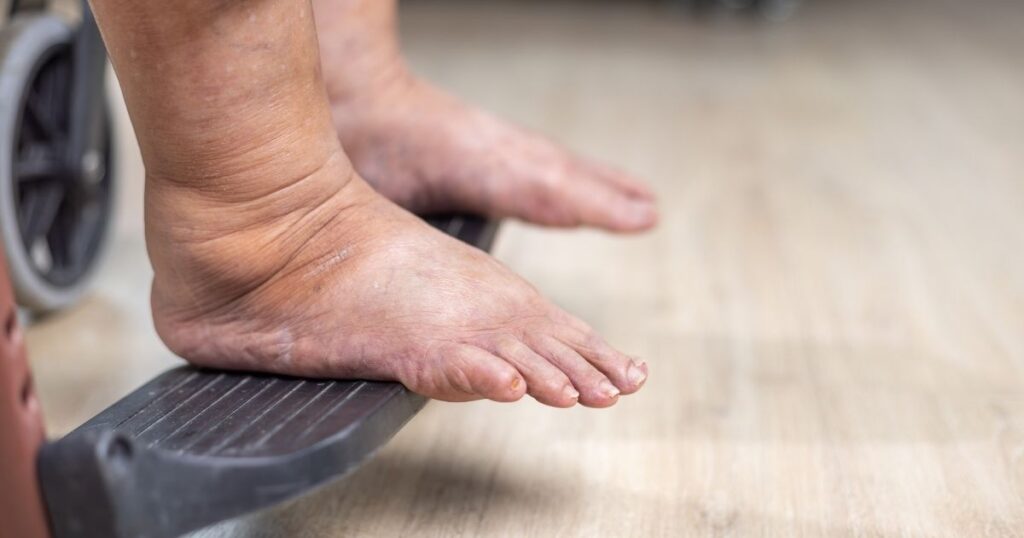Lymphedema and cellulitis are serious medical conditions affecting the body’s ability to manage fluid and infection. Lymphedema is the swelling of tissues due to the accumulation of lymph fluid, often occurring after damage to the lymphatic system. Cellulitis, on the other hand, is a bacterial skin infection that can lead to redness, swelling, and pain. It commonly affects the lower legs, but it can occur anywhere on the body.
While these two conditions might seem unrelated at first glance, they are more closely connected than many realize. Individuals suffering from lymphedema are at an increased risk of developing cellulitis, and understanding this connection is crucial for managing both conditions effectively.
Importance of understanding the connection between the two conditions
Understanding how lymphedema contributes to cellulitis risk is vital for patients living with lymphedema. Cellulitis can become a serious complication that worsens lymphedema, creating a vicious cycle of swelling and infection that is difficult to control. By recognizing the signs of both conditions and understanding how they are linked, patients can reduce their risk, seek prompt treatment, and manage their health more effectively.
Purpose of the blog post: to inform and empower patients
This blog post aims to educate patients about the connection between lymphedema and cellulitis. It provides detailed insights into how these conditions are interrelated, how to spot early symptoms, and how to manage the risks involved. Whether you are new to these terms or looking to deepen your understanding, this article will help you confidently navigate these challenges.
Understanding Lymphedema
Definition and causes of lymphedema
Lymphedema is a condition that occurs when the lymphatic system is blocked or damaged, resulting in the accumulation of lymph fluid in the tissues. This fluid buildup leads to swelling, most commonly in the arms, legs, or genital area. Lymphedema can be classified as either primary (caused by genetic factors) or secondary (resulting from injury, surgery, or infection).
Causes of lymphedema:
- Primary lymphedema: A rare condition caused by developmental abnormalities in the lymphatic system.
- Secondary lymphedema: More common and often results from cancer treatments (e.g., surgery or radiation), infections, or trauma to the lymphatic system.
Symptoms and signs to look out for
Lymphedema is characterized by noticeable swelling in the affected area, which may worsen over time. Early signs include:
- Swelling: Often starting in the extremities (arms, legs), it can occur anywhere on the body.
- Heaviness or tightness: A feeling of fullness or tightness in the affected area.
- Discomfort: The swollen area may become painful or tender to the touch.
- Skin changes: The skin may become thickened or develop a leathery texture over time.
- Restricted movement: Difficulty moving the affected limb or body part due to swelling.
Risk factors and demographics affected.
Anyone can develop lymphedema, but certain factors increase the likelihood:
- Cancer treatments: Individuals who undergo surgery or radiation for cancers such as breast, prostate, or pelvic cancer.
- Infections: Chronic or severe infections that affect the lymphatic system.
- Obesity: Excess weight can put additional strain on the lymphatic system.
- Age: Lymphedema is more common in older adults, especially those undergoing medical treatments that impact the lymphatic system.
Understanding Cellulitis
Definition and causes of cellulitis
Cellulitis is a bacterial skin infection that typically affects the deeper layers of the skin and the tissue beneath it. It can spread rapidly and cause redness, swelling, and pain. The condition is most often caused by bacteria such as Streptococcus or Staphylococcus.
Causes of cellulitis:
- Breaks in the skin: Cuts, insect bites, or surgical wounds can allow bacteria to enter the skin.
- Lymphedema: Swollen limbs are more prone to injury, and the stagnant lymph fluid can provide a breeding ground for bacterial infections.
- Pre-existing conditions: Diabetes, immune system disorders, and venous insufficiency can increase the risk of cellulitis.
Symptoms and signs to recognize
Recognizing cellulitis early is crucial for effective treatment. Common signs include:
- Redness: The skin in the affected area becomes red, warm to the touch, and may spread rapidly.
- Swelling: The skin becomes swollen and puffy, particularly around the infected area.
- Pain: The affected area may be tender or painful.
- Fever: Many individuals with cellulitis experience fever, chills, and general malaise.
- Blisters: In severe cases, fluid-filled blisters may form over the infection site.
Risk factors and demographics affected.
Certain individuals are more susceptible to cellulitis:
- Individuals with lymphedema: The compromised lymphatic system increases the risk of bacterial infections like cellulitis.
- Chronic skin conditions: Conditions such as eczema or athlete’s foot can create breaks in the skin, making it easier for bacteria to enter.
- Weakened immune systems: People with diabetes, cancer, or immune system disorders are at a higher risk.
- Age: Older adults are more vulnerable to cellulitis and lymphedema, particularly if they have other chronic health conditions.
The Connection Between Lymphedema and Cellulitis
How lymphedema increases the risk of cellulitis
Lymphedema creates an environment where lymphatic fluid pools in the tissues, causing the skin to stretch and weaken. This leads to a compromised skin barrier that is more susceptible to infections, including cellulitis. The stagnation of lymph fluid also contributes to inflammation, making it easier for bacteria to invade the skin.
When the lymphatic system is damaged, its ability to clear out harmful pathogens is impaired, increasing the risk of infections like cellulitis. Swollen limbs, a common symptom of lymphedema, often result in small cuts, abrasions, or breaks in the skin that act as entry points for bacteria.
Mechanisms behind the link
The mechanism connecting lymphedema to cellulitis involves both physical and biological factors:
- Impaired immune response: The accumulation of lymph fluid weakens the immune system’s ability to defend against bacterial invasions.
- Stagnant fluid: The trapped lymph fluid provides an ideal breeding ground for bacteria, which thrive in moist environments.
- Skin damage: Chronic swelling and pressure can cause skin changes, such as cracks or blisters, creating an opening for bacteria to enter.
Importance of early detection and management
Early recognition of both lymphedema and cellulitis is essential to prevent severe complications. Immediate medical attention and treatment can prevent the infection from spreading and effectively manage lymphedema symptoms. Patients with lymphedema should be particularly vigilant in monitoring their skin for signs of infection, such as redness, warmth, and swelling, as cellulitis can worsen quickly.
Preventing the cycle of infection
For those with lymphedema, preventing cellulitis requires a proactive approach:
- Proper skin care: Regular moisturizing and avoiding cuts or scrapes on swollen areas.
- Compression therapy: Wearing compression garments helps reduce swelling and improve lymphatic flow, preventing fluid buildup.
- Infection prevention: Keeping the affected area clean, avoiding injury, and treating wounds promptly can reduce the risk of cellulitis.
Conclusion
The link between lymphedema and cellulitis is significant, especially for patients already managing lymphedema. By understanding the relationship between these two conditions, patients can take steps to reduce their risk of infection and better manage their health. Awareness of symptoms, proper skin care, and prompt treatment are key to preventing complications. If you have lymphedema, it’s essential to work with your healthcare provider to create a comprehensive care plan that effectively addresses both conditions.
Frequently Asked Questions (FAQs)
1. Can cellulitis be prevented in people with lymphedema?
While cellulitis cannot always be prevented, proper care, such as regular skin moisturizing, wearing compression garments, and promptly treating wounds, can significantly reduce the risk.
2. How is cellulitis treated?
Cellulitis is typically treated with oral or intravenous antibiotics, depending on the severity. In severe cases, hospitalization may be required.
3. Does cellulitis make lymphedema worse?
Yes, cellulitis can worsen lymphedema by further damaging the lymphatic system, increasing swelling, and causing more fluid buildup.
4. What should I do if I notice signs of cellulitis?
Seek medical attention immediately. Early treatment with antibiotics is essential to prevent the infection from spreading.
5. Are there any lifestyle changes that can help manage both conditions?
Yes, maintaining a healthy weight, exercising regularly, and following your doctor’s advice for managing lymphedema and cellulitis can improve overall health and reduce risks.





